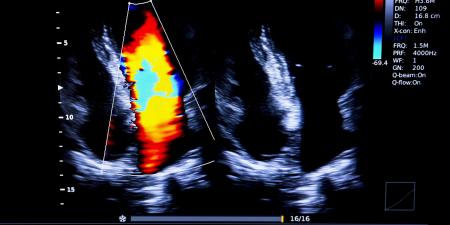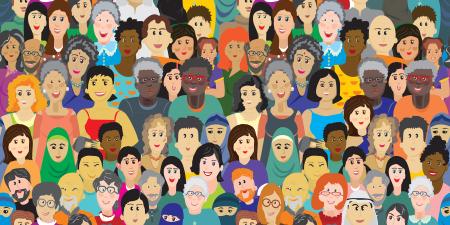Art therapy is a growing field of mental health treatment that uses art as a form of illustrative communication. The approach is based on the belief that the creative process, acting as a form of subconscious expression, can help identify inner conflicts, engender self-esteem and self-awareness, reduce stress, and rebuild an overall physical, emotional, and social sense of well-being. Art therapy is thought to be especially valuable for treating children, who often lack the social or verbal capabilities to express their thoughts and emotions, particularly when they have experienced trauma.
History and Principles
The field of art therapy was developed over the course of the 1940s and ’50s through the efforts of a few theorists working independently of each other. Psychotherapist and educator Margaret Naumburg pioneered its use with psychiatric patients and published various works on the subject, including Studies of the “Free” Art Expression of Behavior Problem Children and Adolescents as a Means of Diagnosis and Therapy (1947) and Schizophrenic Art: Its Meaning in Psychotherapy (1950). Naumburg drew on Sigmund Freud’s analysis of dream imagery as a presence of the unconscious self. Freud wrote, “We experience it [a dream] predominantly in visual images…. Part of the difficulty of giving an account of dreams is due to our having to translate these images into words” [1]. Freud’s psychotherapeutic methods relied on free association and the idea of “catharsis,” during which the unconscious reveals itself to the conscious. Naumburg saw art as able to connect these two, becoming a window within the self that would allow the conscious to “hear” the unconscious. This is the underlying principle of art therapy: the idea of “drawing from within” [2].
A few years after Naumburg, Edith Kramer emerged on the art therapy scene. Kramer, an artist who fled Prague before World War I, taught art classes to children who were refugees of Nazi Germany. She felt that the creativity involved in producing art had the potential to heal by enabling the transfer of some impulses and emotions into images [3]. When Kramer came to the United States in 1951, she worked as an art therapist with children at Wiltwyck, a residential school for mentally disturbed children in New York City. While Naumburg’s theory focused on the idea of making the unconscious conscious through art, Kramer’s emphasized the healing potential of the creative process itself [3, 4]. Naumburg’s methods were reflective of her role as a primary clinician, whereas Kramer’s theories were more defined by her status as an adjunct therapist [4]. The differences that have existed since the conception of this field persist today, creating a wide variety of forms and goals for art therapy.
Art therapy has three main benefits for the patient: (1) it engages the physical body in relaxation through manipulation of art materials, (2) it allows the patient to engage in a personalized introspective exercise in which the process and finished product become the “symbolic container of traumatic memories” [5], and (3) it allows cognitive reflection through discussion of the artwork [5]. The latter component, especially, enhances the therapist-patient relationship. The process of making art can help bypass verbal centers of the brain, allowing the therapist to safely examine and discuss thoughts manifested in a physical, visual way [6].
In 1971, British pediatrician Donald Winnicot explored art as a potential tool for initiating communication between child and therapist [3]. He developed a technique in which the child and therapist draw together, which he called “the squiggle game” [3]. In this technique, the therapist draws a squiggle on a blank paper, and then the child adds a squiggle, followed by a third squiggle, and so on, until an image is created.
Art Therapy for Disaster Survivors
Recently, an increasing number of pediatric disaster survivors have been treated with art therapy. NYU’s Child Study Center encourages and teaches parents and guardians to use art as a means of communication with children after a stressful occurrence, starting the conversation, for example, by asking about formal elements of the artwork, such as the use of color or shapes [7]. Following the devastation of the Gulf Coast in hurricanes Katrina and Rita, the Hyogo-NOMA Art Therapy Initiative has provided weekly art therapy for over 250 New Orleans public school children who might not otherwise have had access to mental health care. The therapist, Holly Wherry, MAAT, chose the school setting so the children could remain in a familiar, comfortable environment with a built-in support system.
Rebekah Chilcote, an art therapy graduate student at the time of the 2004 tsunami in Sri Lanka, used art therapy to work with 113 girl survivors between the ages of 5 and 13 who were selected by their teachers as those who exhibited the most acute symptoms of grief and trauma [8]. The children were divided into age-appropriate groups of roughly 10 each, which met once weekly for a month. Chilcote prompted the girls to express themselves artistically on a given topic (e.g., “my life, myself” and “the day I will never forget”) and then present their artwork to the group [8]. Chilcote concluded that art is an effective, psychologically beneficial intervention for children who have undergone significant psychological trauma—and one that can be administered cross-culturally [8].
The ICAF, or International Child Art Foundation, established in 1997, is an important force in the field of art therapy worldwide. Following the American tragedy on September 11, 2001, ICAF, in collaboration with psychiatrists and psychologists, asked children to use their creativity to reduce transgenerational transmission of trauma and hatred by producing a vision of peaceful coexistence [9].
Art Therapy and Trauma
Art has been found to be an especially effective tool for working with both adults and children coping with trauma. A traumatic experience can lead to acute stress disorder (ASD, anxiety or dissociation that lasts for a few days or weeks after a stressor), and posttraumatic stress disorder (PTSD, a more long-lasting constellation of similar symptoms). In one study, pediatric patients suffering from ASD after sexual abuse who were treated with art therapy showed a significant reduction in symptoms [5]. Other situations in which children are treated with art therapy are those associated with grave illness or injury—including cancer, renal disease, chronic pain disorders, and severe burns.
The traumatic experience has been described as a dual occurrence, especially for children. The self dissociates during the trauma, creating a rift between tolerable conscious awareness of the event and the intolerable emotional memory of the event that is tucked away in the unconscious [6]. Physical, emotional, and mental energy are expended in keeping the difficult emotions away from the conscious mind. Neuroimaging shows dissociation (which manifests, for example, as amnesia, depersonalization, emotional detachment, and de-realization) when recall of traumatic events is attempted. The left frontal cortex, specifically Broca’s area (responsible for speech), remains inactive, while the right hemisphere—particularly the region around the amygdala, associated with emotional and automatic arousal—is particularly active [10].
Traumatic memories appear to take root not in the verbal, analytical parts of the brain but in the nonverbal regions of the limbic system, from which cognition is somewhat detached (and which, Babette Rothschild postulates, may provide a kind of link to the unconscious mind) [10]. This impairs patients’ ability to communicate with themselves or others about their experiences [10]. Children may be further limited by still-developing language skills, all of which makes nonverbal modalities of expression, such as art, formidable tools for treatment.
References
-
Rubin JA. Approaches to Art Therapy: Theory and Technique. 2nd ed. New York, NY: Brunner-Routledge; 2001.
-
Malchiodi CA. The Art Therapy Sourcebook. 2nd ed. New York, NY: McGraw-Hill Professional; 2006.
-
Malchiodi CA. Understanding Children’s Drawings. New York, NY: Guilford Press; 1998.
-
2018;
Rubin JA. Art Therapy: An Introduction. New York, NY: Bruner-Mazel; 1998.
- Sarid O. Trauma and acute stress disorder: a comparison between cognitive behavioral intervention and art therapy. Arts Psychother. 2010;37(1):8-12.
- Orr P. Art therapy with children after a disaster: a content analysis. Arts Psychother. 2007;34(1):350-361.
-
Goodman RF. Talking to kids about their art. http://www.aboutourkids.org/articles/talking_kids_about_their_art. Accessed August 10, 2010.
- Chilcote R. Art therapy with child tsunami survivors in Sri Lanka. Art Ther: J Am Art Ther Assoc. 2007;24(4):156-162.
-
International Child Art Foundation. Fact sheet, May 2010. www.icaf.org/pdfs/ICAF%20Fact%20Sheet%20-%20May%202010.pdf. Accessed August 10, 2010.
- Eaton L. A review of research and methods used to establish art therapy as an effective treatment method for traumatized children. Arts Psychother. 2007;34(1):256-262.



